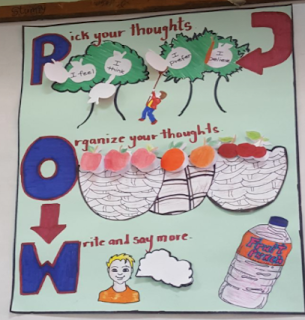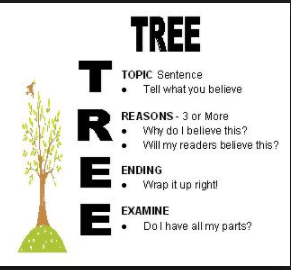Blog # 7 : 9th- 10th November. 2017
A famous Italian novelist by name of Umberto Eco once said “to survive, you must tell stories”. Is storytelling that important to our existence? Our answer is yes! Storytelling is an innate skill and we see this everyday in children as well as ourselves. The children who are unable to read as yet are able to tell stories based on their experiences and the material that they see. That is how we know that storytelling is a skill we are all born with. For last week’s lesson, our sessions focused on Narrative writing or storytelling. We learnt about the elements of narrative writing and how to teach the genre.
Throughout our primary and secondary school years, we learnt a lot about narrative writing and its components. Therefore, much of the information covered in last week’s sessions were reinforcements. We were already familiar with the elements of narrative writing but we learnt some new information about these elements. To begin with, we discovered that the plot is divided into three parts which are the beginning, middle and end. We also discovered that the terms, introduction, body and conclusion are used in the narrative writing. Prior to last week’s lesson, we only associated these terms with other genres such as expository and persuasive writing. Moreover, we learnt that we cannot end our stories at the climax as this can cause our readers to be confused. We also learnt that in order for the piece of writing to be labelled a story, it must to have a conclusion.
Furthermore, we discovered that the plot is developed in four stages. They are: the problem that introduces the conflict, characters’ roadblocks as they attempt to solve the problem, the climax and the resolution of the problem. Based on all that we have learnt, we realized that the plot is an essential element of a story as without it, the story would be non-existent.
Another important story element is the setting. We learnt that the setting is not only where the story occurs but that the time in which the story takes place. Both components of the setting are equally important as they help to drive the plot. In regard to the characters, we learnt that a story usually has one main character with two or three supporting characters. The lecturer highlighted that too many characters in a story can be problematic as readers tend to forget some of these characters. We also agree with her statement.
Moreover, one of the most important things that we learnt during the sessions, was how to develop characters. When we reflected on books that we read in the past, we realized that the authors do not always directly state what a character is like but through their actions, dialogues or monologues, we are made aware of their traits.
After learning about this genre of writing, it is necessary that we ourselves are able to teach students how to write a story. From last week’s sessions, we learnt about some strategies that will help us to teach narrative writing to our students . Modeling continues to be the top of the list of teaching strategies as it very crucial. The use of technology, gallery walks and story maps were some of our favourite strategies that can be utilized in the teaching of narrative writing to children.
We must say that last week was one of our favorite sessions. We had an enjoyable class and we acquired a lot of useful and helpful information. As a result, there were many notable aspects of the sessions that we liked and we must commend our lecturer for an outstanding lesson. To begin with, we liked that the lecturer read a narrative piece to us at the beginning of the lesson and engaged us in an interactive read aloud. The lecturer stopped at intervals to ask questions, encourage us to make predictions and to share our thoughts. It was a great model of the way we should do reading with our students. Moreover, we liked that the story was not solely used as a model of a piece of exceptional writing. The lecturer frequently made references to the story and used it to explain the elements of narrative writing which helped us to make the connection.
Secondly, we liked the manner in which the element of theme was explained. The lecturer provided us with an example of a piece with the theme of ‘racism’ and this helped us to understand how to identify the main point of a piece. Based on previous experiences, identifying the theme of a piece of writing was often problematic if it was not explicitly expressed by the author.
Another aspect of the sessions that we liked was the reading of the story “The Three Little Pigs” from the wolf’s perspective in order to explain Point Of View (P.O.V.).
Finally, we liked that the lecturer expressed a great passion for narrative writing and thus delivered the content with a lot of excitement and enthusiasm and this captured our attention from the beginning to end of the lesson. In light of this, we suggest that the lecturer shows the same zeal in other topic areas of the course because they are as equally important for our development.






 During last week’s lecture there were some aspects of the class that we really enjoyed. At the beginning of the class, we were required to display our charts that showed the link between the stages of the writing process and the six plus one traits of writing. Although all the charts presented were very creative and accomplished the intended task, our favourite charts were the ‘Six trait train’ and ‘Linking the writing process and the writing traits with Noella’.
During last week’s lecture there were some aspects of the class that we really enjoyed. At the beginning of the class, we were required to display our charts that showed the link between the stages of the writing process and the six plus one traits of writing. Although all the charts presented were very creative and accomplished the intended task, our favourite charts were the ‘Six trait train’ and ‘Linking the writing process and the writing traits with Noella’.